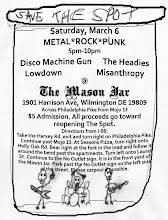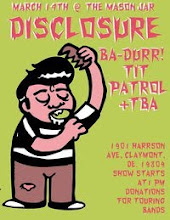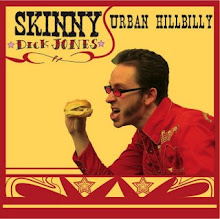Study guides are ultimate fun...
Explain why the mere fact that some datum is consistent with your hypothesis does not mean that it is not evidence against your hypothesis.
Because, if the probability of your hypothesis given the consistent data is less than the probability of any other hypothesis given the same consistent data, it is evidence for the other hypothesis, even if it's also consistent with your's. {P(e/not h) greater than P(e/H)} Consistent data is neither necesarily evidence for or against an argument.
What is an auxiliary hypothesis?
An auxilary hypothesis is a sub-conclusion in a complex argument. It is a conclusion that serves as a premise for another conclusion and must be true in order for the main hypothesis to be true.
Can a theory be weakened if auxiliary hypotheses are used to help the theory to accommodate a troublesome piece of data? Explain.
Yes, the more auxilary hypothesese introduced, the weaker an argument becomes. It's inherant probability lowers with each auxilary. For instance, the probability of (H1) is inherantly higher tha the probability of (H1 & A1) which is higher tha (H1 & A1 & A2) etc...
What is Occam’s razor? Explain its relevance to evidential arguments for God’s existence.
Occam's razor is the theory that favoring the simplest explanition is the preffered method. In reference to the evidential argument, it is pointed out that pain and suffering in the world are morally random. This makes metaphysical naturalism more likely, because if theism were the case, pain would be allotted to the morally negative, and pleasure to the morally good. Just the existence of evil in a world created by an all-good loving God seems contradictory. The simplest explanation of the moral randomness of suffering and pleasure is that there is no God to care about or regulate it. The probability of theism given the evidence of pain and suffering is less likely that the probabbilty of matephysical naturalism given the same evidence. {P(p&s/theism)less than P(p&s/metaphysical naturalism)} The theory that posits the fewest unknown entities or phenonmena wins.
Explain: For any datum e and hypotheses H1 and H2, e is evidence favoring H1 over H2 if and only if P(e/H1) > P(e/H2).
e is evidence for an hypothesis iff the probability of the hypothesis is higher given e is than the probability of the hypothesis alone. {P(H/e)greater than P(H)}
Conversely, it is evidence iff the probability of e given the hypothesis is greater than the probability if e given not the hypothesis, any other hypothesis.
Given two hypothesis, if the probability of hypothesis one given e is greater than the probability of hypothesis two given the data, than e favors hypothesis one by fifty percent or more. It has the most explanatory power.
Explain Draper’s formulation of the argument from God’s hiddenness.
Why, if God exists, can science ignore him and still explain so much, so successfully? Science has had extreme success using naturalistic explanations to solve life's mysteries, and given this evidence, it is less probable that theism is correct than it is that metaphysical naturalism is correct. (P(success of naturalistic explanations/theism) less than P(success of naturalistic explanations/metaphysical naturalism)
Explain the wider teleological argument for the existence of an intelligent designer of the universe.
Wider Teleological Argument -
The universe is made up of numbers, constants on which a livable cosmos depends. Humans can't theoretically predict these constants, they must be measured, experimented upon in order to know them. There is no necessity to the values these numbers have. If their values were any different, our cosmos would be unimaginably different and indeed unlivable, incapable of supporting rational animals who could even question the different universal constants.
Metaphor of the cosmos producing machine- machine with many dials that determine the base constant features of a cosmos. If dials were slightly differently set- no life. But our's is set to enable it to contain life.
Teleological Argument - Irrational objects act towards an end. Always behave the same way, the way that produces the best result. By design. An irrational thing can not direct itself. God directs it.
Proof of fine tuning argument is that the universe has been fine tuned. Since the large scale constants have been fine tuned for life, and rational life does exist, the life too must have been fine tuned by the same designer.
Teleological argument doesn't posit/prove omniscient, omnipotent, all-good god, eternal and perfect.
Objection - our fine tuned cosmos is no more or less likely than any other combination of constant dials.
Straw analogy. You're forced to draw a straw out of a trillion straws. Only one short straw, if you don't get it, you will cease to exist. You do get it! It is likely to conclude, given the infinite odds that the draw was not at random, but you were helped by some mysterious unseen benefactor. Is it unimportant because it was equally likely you'd draw one of the trillion minus one longer straws and cease to exist? If a very good explanation can be offered, it is preferable to no explanation at all.
Explain Van Inwagen’s "multiverse objection" to that argument. Explain the "this universe reply" to the objection.
MULTIVERSE OBJECTION -
The cosmos is only one in a vast number of actual cosmoi which exhibit a vast number of cosmos designs. Cosmos machine is random and non stop in producing cosmos, or a vast number of machines each producing a cosmos. With that many cosmos being produced, it stands to reason that some or at least one would be completely suitable for rational life. (We can not observe the cosmoi not suitable for such life. We can only see our cosmos - observational selection effect.)
Either this is the only cosmos which some rational being has fine tuned in such a way that it is suitable for life, or this is one out of a vast number of cosmoi, a few of which are suitable to life.
While van Inwagen admits that it is less likely that a designer designed given that at least one universe is life permitting than it is that there are random multiverses, he claims that it is more likely that a designer designed given this universe is life permitting than it is that there are random multiverses.
THE PROBABILITY CALCULUS.
restricted conjunction rule - P(A and B) = P(A) x P(B) independent events
general conjunction rule - P(A and B) = P(A) x P(A given B) events together, not independent
restricted disjunction rule - P(A or B) = P(A) +P(B) mutually exclusive events
general disjunction rule - P(A orB) =P(A) = P(B) - P(A and B) not mutually exclusive
negation rule - P(A) = 1 - P(not A)
Claudia Boulton
7 years ago








































































































No comments:
Post a Comment